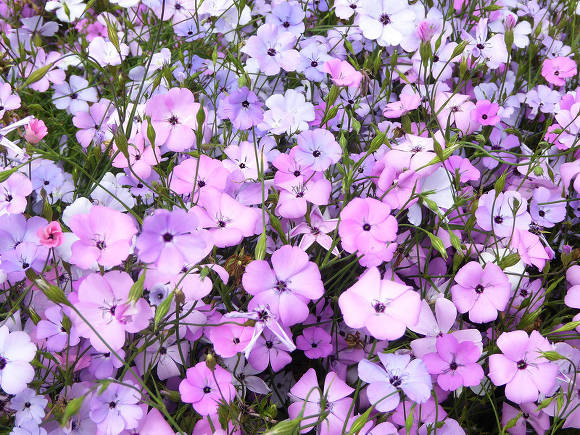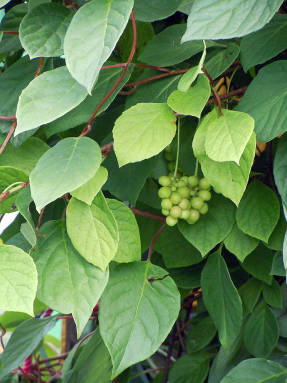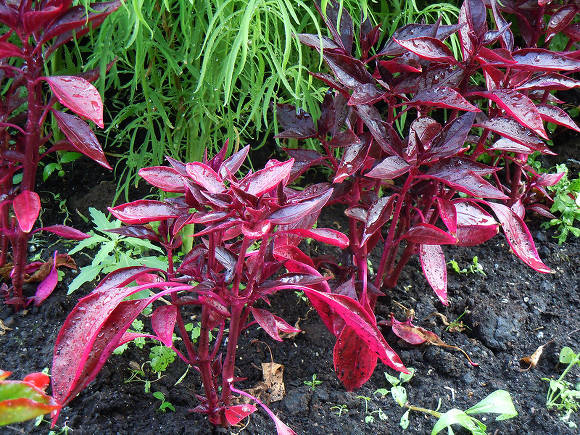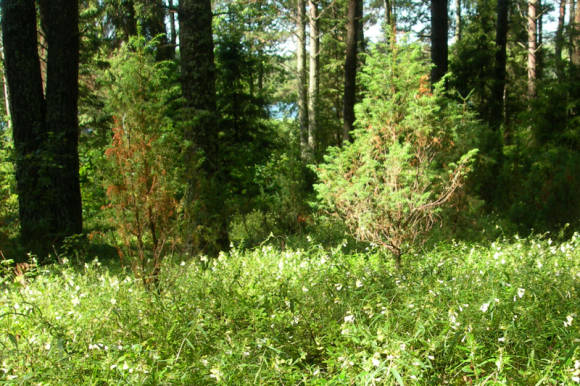| Phalaenopsis (Phalaenopsis) is the most common orchid in indoor cultivation. About 60 natural species are known in this genus, most of which are epiphytic, growing on trees, although there are lithophytic ones growing on the ground. However, the most common now are numerous hybrid forms obtained by interspecific crossing. Despite the simplicity and ease of cultivation in indoor conditions, which have led to the incredible popularity of these orchids, we receive many questions regarding the intricacies of caring for phalaenopsis. We bring to your attention an overview of the most relevant ones. |
 |
Question: When is it time to transplant phalaenopsis?
Answer: The question is often asked whether it is necessary to transplant phalaenopsis immediately after purchase? A healthy plant will need a transplant only after two or three years, when the old substrate (bark) collapses. In this case, the transplant should be done with the maximum replacement of the old bark with a new one.
It's another matter if you purchased phalaenopsis at a markdown. Then you need to carefully examine the roots. If there is reason for excitement, then a transplant is necessary with the replacement of the substrate and the removal of diseased roots.
Phalaenopsis is not recommended to be transplanted during the growth of roots, children, leaves, peduncles, during flowering.
Question: What substrate is suitable for phalaenopsis?
Answer: Only the bark, you can cover the top layer of the roots with sphagnum. Phalaenopsis is an epiphytic plant. In nature, it lives on tree trunks, while its roots are not immersed in the substrate, but are in a free state. The roots are moistened only by atmospheric precipitation, regularly drying out. Phalaenopsis receives nutrition through rainwater, in which nutrients (most often bird droppings) dissolve as it flows down the leaves. A substrate in the form of a bark is only needed to give the phalaenopsis a vertical stable position, the phalaenopsis will receive nutrients not from the substrate, but from the solution with which you will water the orchid. The bark allows air to flow freely to the roots, allows them to dry out regularly, which is very important.
Often firms that make plant substrates add other components to the orchid substrate. But in the orchid family there are epiphytic and semi-epiphytic species, and species that live on the ground. And each of them will require their own recipe for the substrate.
How to prepare the bark for planting? The bark must be boiled, after boiling it becomes more moisture-absorbing. In the process of heat treatment, causative agents of fungal infections and parasitic insects die.
Question: Which pot to choose for phalaenopsis?
Answer: The phalaenopsis pot should be
- transparent.
Phalaenopsis roots, like leaves, are involved in the process of photosynthesis, i.e. help the plant synthesize organic matter for growth.
- have drainage holes for unobstructed drainage of water.
Locking the roots leads to fatal consequences for phalaenopsis.
- fit in size.
If you are replanting a healthy, overgrown plant, then a slightly larger pot should be used. If diseased roots were removed during transplanting, then, most likely, a larger pot will not be needed. It makes no sense to plant phalaenopsis in a pot for growth, an increase in the volume of the substrate will not positively affect either the size of the flowers or the frequency of flowering.
Question: How to transplant phalaenopsis?
Answer: When transplanting phalaenopsis, one must be extremely careful, try to damage the roots as little as possible. We need to make sure that the transplant is really necessary. Prepare pre-boiled and cooled bark, a pot, if you need another, scissors for pruning diseased roots, sulfur for dusting (if necessary).Healthy phalaenopsis should be shed before transplanting as raw roots are more flexible. However, if it is necessary to trim the damaged roots, then it is better to transplant phalaenopsis with dry roots.
Gently remove the phalaenopsis from the pot, shake off the old substrate as much as possible (it is better to remove the old bark completely, it is more moisture-absorbing, and the substrate should dry out evenly), if the roots stick to a piece of bark, leave it, do not tear it off. Examine the roots, cut out bad ones, sprinkle the cut with gray or crushed coal. Place some bark on the bottom of the pot. No drain needed. The fraction of the bark should not be large, but not small, about 1.5x2 cm.
Place the phalaenopsis roots in a pot, start gradually adding fresh substrate. Leave the roots that do not fit in the pot free, as they easily rot when injured. These protruding roots must be soaked during watering. The top of the pot can be covered with sphagnum, but the sphagnum should not be constantly wet. After transplanting, it is better to postpone watering for 7-10 days, during which time the injured roots will dry out.
Question: Phalaenopsis leaves shriveled and wither, what's the problem?
Answer: If you notice that the leaves of phalaenopsis have begun to wilt, shriveled, this means that there is a problem with the roots, they have ceased to supply water to the leaves in full. If this happened from a long overdrying of the substrate, then it is necessary to urgently wet the roots by immersion in water for 10 minutes, spray the leaves, this will help restore turgor faster. If watering does not help, this means that all or most of the roots have died from systematic waterlogging or too long drying. Then it will take resuscitation:
Remove the plant from the pot, despite flowering, shake off the bark, inspect the roots. All living roots after soaking should turn green, full and tough. If the roots remain gray or brown, they are dead and must be cut off. Take a pair of scissors or pruning shears, carefully cut off diseased roots, dust the places of the cuts with sulfur or charcoal. If you had to cut off all the roots or most of them, then powder the bottom of the phalaenopsis (just under the leaves) with Kornevin, this substance will stimulate the phalaenopsis for the rapid formation of new roots, wrap this place with wet sphagnum and place in a pot, spray the leaves. After that, it is necessary to place the plant in a greenhouse. A greenhouse can be any container of a suitable size, which has a transparent, closable top. This can be an unused aquarium, closed on top with plastic wrap, a cut 5-liter water bottle, a basin, etc. A plant placed in a greenhouse will not lose moisture. The greenhouse must be ventilated every two days, sometimes the leaves must be sprayed.
Foliar feeding once every 2 weeks will have a good effect. To do this, it is necessary to dilute a specialized fertilizer for orchids in a concentration 10 times less than for root feeding, and spray with the resulting solution. It is necessary to ensure that the sphagnum is constantly wet (not very wet). The greenhouse should stand in a warm, bright place, since the leaves must photosynthesize and feed the plant. New roots will appear in a month or two. When they grow back, phalaenopsis is transplanted into the bark and gradually accustomed to the conditions of the room - usually not earlier than six months later. A full-fledged copy will have to wait about a year.
Question: There are spots on the leaves of phalaenopsis, what should I do?
Answer: It should be noted right away that some varieties of phalaenopsis are variegated... Such spots do not have a relief (convexity, concavity), more or less evenly distributed over the leaf and throughout the plant.
But if suddenly a spot not characteristic of a plant appears on the leaf, this means that a problem has arisen. A black-brown spot on the phalaenopsis leaf can occur due to direct burn the sun's rays.Such a spot in diameter is usually several centimeters, after transferring the plant to the shade, it does not increase, it dries quickly. Help measures - remove phalaenopsis from the direct sun, then the usual care. Over time, such a stain may fade a little, decrease in size, and, as a rule, does not need treatment. Sometimes the sunburn stain is light and dry. Burns on the leaves can also appear after spraying the plant in the sun.
But there are spots of a different nature. They appear due to non-observance of the temperature regime and the regime of irrigation, spraying. In damp, cool conditions and with reduced ventilation fungal and bacterial rot develops... If the temperature in the room is below +18 degrees, then it is better to cancel spraying. When watering a plant, bathing it, you should try so that the leaves have time to dry before nightfall. Do not allow moisture to enter the growing point (in the middle of the top sheet), this can cause rot in the middle. Rotting spots usually gradually increase in diameter, have a black color, and become wet. Help - changing the conditions of maintenance and care, transferring the plant to a lighter, warmer and more ventilated room, removing the affected area of the leaf, treating with fungicides and bactericides (Seroy, Fundazol, Fitosporin, Trichopol). After processing a diseased plant, the instrument must be disinfected, do not put the affected phalaenopsis close to other plants in order to avoid transmission of infection. Usually several treatments are required. The plant can be considered healthy again if the affected area does not enlarge and new spots do not appear.
Like many other plants, phalaenopsis is susceptible to attack by various sucking insects, the pricks of which turn into wounds. This is, first of all, spider mites and scale insects, may also meet aphid, mealybug, thrips. The bite sites first acquire a yellowish color, then they can become dark. These spots are small in diameter, unevenly scattered over the leaves, and wounds can be seen in the bite sites. Thrips lays its eggs on the underside of the leaf, brown dots and dashes appear on the upper side, which eventually become whitish. Help measures - to identify the pest and treat it with an acaricide - a drug against a tick (Neoron, Agravertin, Fitoverm) or an insecticide - against insects (Aktara, Aktellik, Fitoverm), and repeated treatments will be required.
Question: How to make phalaenopsis bloom?
Answer: Phalaenopsis can grow on a north window and under a fluorescent lamp, but often refuses to bloom. The best stimulus for flowering will be the rays of the sun. Optimal placement on the eastern or western windowsill, with a certain amount of sunlight falling on the plant. Phalaenopsis can arrange a short period of rest in winter, when the length of daylight hours is reduced, move it to a room with a night temperature of + 15 ... + 18 degrees, reduce watering. Usually for phalaenopsis, a daily temperature fluctuation of several degrees is quite enough. Phalaenopsis needs to be fed with special fertilizers for orchids. In the case of active growth of green mass and the absence of flowering, it is necessary to abandon feeding for a while.
Question: What to do with a peduncle after flowering, how to care for a phalaenopsis after flowering?
Answer: There are no changes in leaving after flowering. It is not recommended to cut the flower arrowhead until it is dry. But even if you cut off the green arrow, the plant itself will not be harmed.
When the flower arrow begins to dry, then it is cut off below yellowing, from the remaining buds, re-flowering is possible. But often the flower arrow is disposable; you should not wait for 100% re-flowering on it. If the arrow is dry, then it must be carefully cut as close to the outlet as possible, the length of the hemp is not so important. The cut usually does not need to be processed with anything, but it can be processed with brilliant green, sprinkled with coal, sulfur.
Question: How to propagate phalaenopsis?
Answer: Phalaenopsis reproduces vegetatively at home. But it should be noted, not as easy as other plants. The most painless way to reproduce is department of children, which sometimes, for certain reasons, forms on a peduncle instead of a flower. But this does not happen often. You can separate it after forming your own roots. The baby is raised in wet sphagnum, in a greenhouse. The baby will become a full-fledged specimen in about a year.
Sometimes phalaenopsis gives side baby... Most often this occurs after damage or death of the growth point (rot, mechanical damage). The baby is separated and raised in the same way.
There is another way of vegetative propagation - division of the mother plant... A specimen with 6-10 leaves is cut across so that the top also has at least a few roots. The cut is dried for several days, treated with sulfur, coal, the upper part is planted in a mixture of sphagnum and bark, trying to prevent the cut from touching the substrate. The bottom should give out lateral babies that separate as described above.
Seed reproduction of Phalaenopsis at home is almost impossible.
Question: Phalaenopsis leaves turn yellow, what's the problem?
Answer: If only the bottom leaf turns yellow, and the rest remain green and elastic, then this is the natural dying off of the old leaf. Often, with the growth of a new leaf, the phalaenopsis sheds the lowest old leaf. The maximum number of leaves on a phalaenopsis can be 10-12 pieces, the minimum should be at least 3 leaves. If the plant does not grow new leaves, there are few of them, and he drops the lower leaf - the phalaenopsis is starving. During famine, the main thing for any plant is to preserve the growth point; in the name of it, some parts of the plant (lower leaves, individual shoots) die, giving up nutrients.
So why might your plant starve? First, from a lack of light. Then the process of photosynthesis cannot proceed normally, the plant does not produce organic substances for its construction. Secondly, from the lack of macro- and microelements that come with fertilizers. If the plant is in a dark place, you need to provide it with light. If phalaenopsis has not been fed for a long time, it is necessary to start feeding.
If at the same time a few leaves turn yellow, they begin to rot away - the plant has been poured. Yellowing in this case is spread over almost the entire leaf, not pointwise. It is necessary to reduce watering, inspect the roots for rot. If necessary, take resuscitation measures (see above - resuscitation).
The extensive yellowing of several leavesc can also be caused by excess light. Sometimes this is accompanied by both large brown spots on the leaves and the phalaenopsis rosette. This happens if the phalaenopsis is placed in direct sun without shading. It is necessary to rearrange it to a less illuminated place.
A chemical burn can also cause massive yellowing of leaves if phalaenopsis is watered with a very concentrated salt solution. Even one such treatment can cause the death of the plant.
If yellowing is pointlike, in the form of separate small specks, then this lesion by sucking parasites (see above) must be treated with chemicals.
Question: What do healthy phalaenopsis roots look like?
Answer: The phalaenopsis root is a horsehair-thick thread that is covered with a water-storage braid on top. The total root thickness is approximately 0.5 cm. The roots filled with water are green with white streaks. If the roots are dry, then the color becomes silvery. Dead roots become gray-brown or brown, empty inside, shriveled. If, after soaking for 10 minutes, the roots have not turned green (with white strokes), then they have died.
Question: How to properly water Phalaenopsis and what kind of water?
Answer: Phalaenopsis is best watered by immersion. The pot with phalaenopsis is placed in a container, the container is filled with water up to the level of the beginning of the leaves, left in this position for several minutes (no more than 10), the pot is taken out of the water, the remaining water is allowed to drain from the drainage holes, put in a permanent place. The frequency of watering depends on the environmental conditions (humidity, temperature, etc.). Between watering, you need to let the roots dry out, wait until the roots turn from green to silvery.
Phalaenopsis can withstand light overdrying, but is afraid of overflow. When the roots are waterlogged, they are exposed to fungal and bacterial diseases. There is a golden rule: underfilling is better than overfilling. Water for irrigation must necessarily be separated, at room temperature or 2-3 degrees warmer, it is desirable that the water is soft, with a low calcium content. If tap water contains a lot of calcium, then it is better to take boiled water for irrigation. The water must be boiled for several minutes, allowed to cool completely and carefully drained from the sediment that formed at the bottom of the kettle. It is not recommended to use the water passed through the ion-exchange filter. You can use water passed through a charcoal filter. Top dressing is added to the water for irrigation according to the instructions. When watering, do not allow water to enter the center of the leaf rosette, this can lead to decay of the growth point and its death.
Question: How long does phalaenopsis bloom?
Answer: The duration of the flowering of phalaenopsis depends on the characteristics of the variety and the conditions of detention. Usually phalaenopsis blooms for 2-3 months, sometimes flowering lasts up to six months. Blossoming frequency can be influenced by variety and conditions. Subject to the conditions, phalaenopsis should be guaranteed to bloom at least once a year.
Question: How long does phalaenopsis live?
Answer: Phalaenopsis is a perennial plant. The duration of his life in room conditions, with proper care, can be 7-10 years.
Question: What determines the size of the phalaenopsis, the size of the flowers and the height of the peduncle?
Answer: The size of the leaves, rosettes, flowers, the height of the peduncle in phalaenopsis is determined by the variety, with slight fluctuations depending on the conditions of detention. If you purchased a mini-alenopsis, then it will never become a phalaenopsis Grande. The number of leaves, the height of the plant itself may increase, but not by much, while the flowers will remain their original size.
Question: Why do phalaenopsis buds and flowers fall?
Answer: Phalaenopsis can lose buds and flowers from a sharp change in conditions. This often happens after the purchase of a plant, improper transportation. During flowering, do not overdry the roots.
Question: Why do spots appear on phalaenopsis flowers?
Answer: There are varieties of phalaenopsis with spotted flowers. Spots of a different nature appear after moisture gets on the flowers. It is not recommended to spray these orchids by color. Often spots appear during transportation, especially white varieties. Such flowers cannot be restored.







